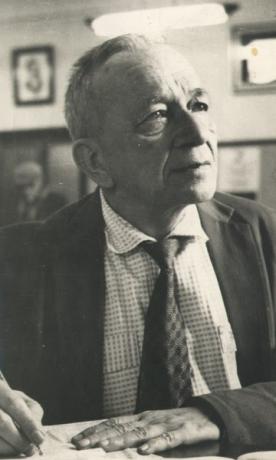O Baroque it is a style that dominated architecture, painting, literature and music in 17th-century Europe.
Therefore, the entire culture of that period, including customs, values and social relations, is called "baroque".
This epoch arose at the end of the Renaissance and manifested itself through great ostentation and extravagance among the groups benefiting from the riches of colonization.
The main features of Baroque
- Far-fetched and exaggerated art;
- Appreciation of detail;
- Dualism and contradictions;
- Darkness, complexity and sensualism;
- Literary Baroque: cultism and conceptism.
Baroque art in Europe
The Baroque style began in Italy and was later developed in other European countries in painting, architecture, sculpture, music and literature.
Baroque in Italy
Italy was considered the cradle of Rebirth and Baroque art where several artists stood out.
1. Caravaggio (1571-1610)
Characterized by the rudeness of his works, Caravaggio he painted religious themes where he explored the contrast between light and shadows.
Highlights include: "The Capture of Christ", "The Scourge of Christ", "The Death of the Virgin", "The Supper of Emmaus", "David with the Head of Goliath", "The Slaughter of Christ".

2. Bernini (1598-1680)
Bernini was an Italian sculptor and architect. His works can be found in Rome and the Vatican, among them: "San Peter's Square", "St. Peter's Cathedral", "The Ecstasy of St. Teresa", "Bust of Paul V" and "Castle of Sant'Angelo" .

3. Borromini (1599-1667)
Francesco Borromini was an Italian architect and sculptor. Among his works are: the "Cathedral of Saint Peter", "Sant'Agnese in Agone", "Palazzo Spada", "Palazzo Barberini", "Sant'Ivo alla Sapienza" and the "Church of San Carlo alle Quattro Fontane ".

4. Andrea Pozzo (1642-1709)
Pozzo was an Italian architect, painter and decorator. Among his works are: "Glorification of St. Ignatius", "Guardian Angel", "The Apotheosis of Hercules", the ceiling of the "Noble Hall of the Liechtenstein Palace" in Vienna and the "False Dome of St. Francis Xavier".

Learn more about Baroque art.
Baroque in Spain
THE Spain it was the center of the baroque poets, among which the following stood out: Quevedo, Gôngora, Cervantes, Lope de Vega, Calderón, Tirso de Molina, Gracián and Mateo Alemán.
They made the best literature of the 17th century, assimilated by the rest of Europe from the second half of the 17th century onwards.
In addition to literature, the Spanish Baroque was one of the most striking of this period, where the painter stands out Diego Velázquez and the works: "The girls", "Old woman frying eggs", "Portrait of a man" and "Christ Crucified".

Baroque in Portugal
In Portugal, Baroque dates from 1508 to 1756. Father Antônio Vieira is the main author of literary Baroque in the country, however, he spent most of his life in Brazil.
His Main Work "the Sermons" constitute a rich and contradictory world. They reveal their intelligence focused on sacred things and, simultaneously, on Portuguese and Brazilian social life.
Vieira was a kind of chronicler of immediate history. Thus, he elaborated the sermons within the medieval technique, explaining the metaphors of the biblical language.
In addition to Vieira, the following deserve mention: Father Manuel Bernardes, D. Francisco Manuel de Melo, Francisco Rodrigues Lobo, sorority Mariana Alcoforado and Antônio José da Silva.
In Portuguese Baroque painting, the painter Josefa de Óbidos deserves to be highlighted, who although born in Spain, lived and developed her art in Portugal. Among his most outstanding works are: "Mary Magdalene comforted by the Angels", "Calvary", "The Holy Family" and "Santa Maria Magdalena".

Read too:
- Baroque in Portugal
- Sermon of the Sixtieth
Baroque in Brazil
O Baroque in Brazil it was introduced through the Jesuits at the end of the 16th century. Only from the 17th century onwards, it became widespread in the large centers of sugar production, especially in Bahia, through the churches.
After the phase of Bahian Baroque, sumptuous and heavy, the style reached the province of Minas Gerais in the 18th century. It was there that cripple (1738-1814) created a profoundly national art.

At that time, there were no conditions in Brazil for the development of a literary activity itself. What was seen was some writers mirroring themselves in foreign sources, generally Portuguese and Spanish.
Main Baroque Authors in Brazil
The main Brazilian writers of this period were:
- Bento Teixeira (1561-1618)
- Gregory of Matos (1633-1696)
- Manuel Botelho de Oliveira (1636-1711)
- Friar Vicente de Salvador (1564-1636)
- Friar Manuel da Santa Maria de Itaparica (1704-1768)
The historical context of baroque: summary
O Council of Trent, held from 1545 to 1563, caused major reforms in Catholicism in response to Martin Luther's Protestant Reformation. Thus, the authority of the Church of Rome was vigorously reaffirmed after losing many of the faithful.
THE Company of Jesus, recognized by the pope in 1540, came to dominate teaching almost entirely. She played an important role in spreading Catholic thought approved at the Council of Trent.
The Inquisition, which established itself in Spain from 1480 and in Portugal from 1536, threatened freedom of thought. The climate was one of austerity and repression.
It was in this context that the artistic movement called Baroque developed, in an ecclesiastical art that wanted to propagate the Catholic faith.
At no time has such a large number of churches and chapels, statues of saints and sepulchral monuments been produced.
Almost everywhere, the Church was associated with the State. Thus, baroque architecture, previously only religious, also appears in the construction of palaces, with the aim of causing admiration and power.
Read more about Baroque:
- Baroque Characteristics
- Baroque style
- Baroque Poetry
- The Language of Baroque
- Baroque painting
- Baroque Sculpture
- Baroque architecture


